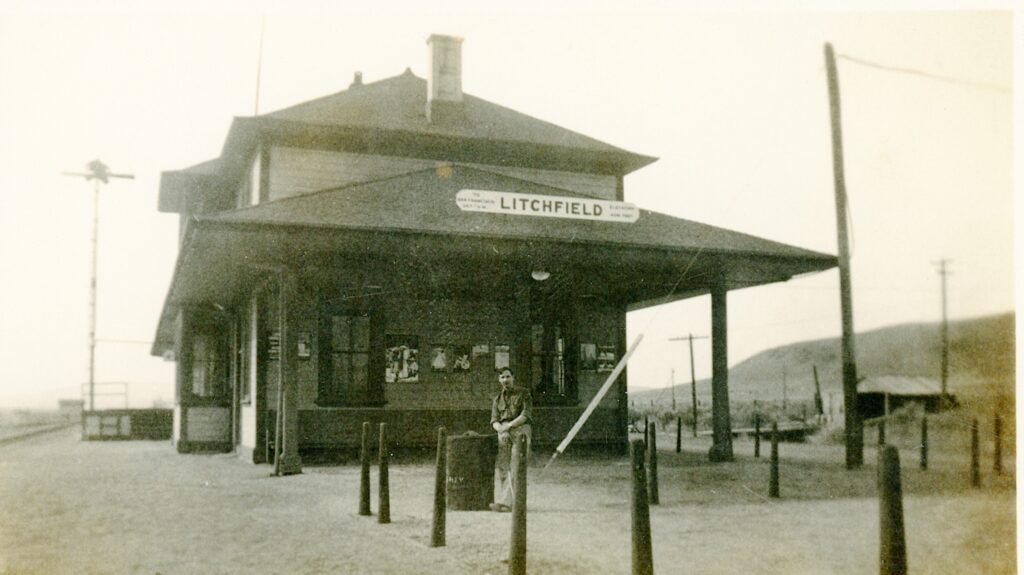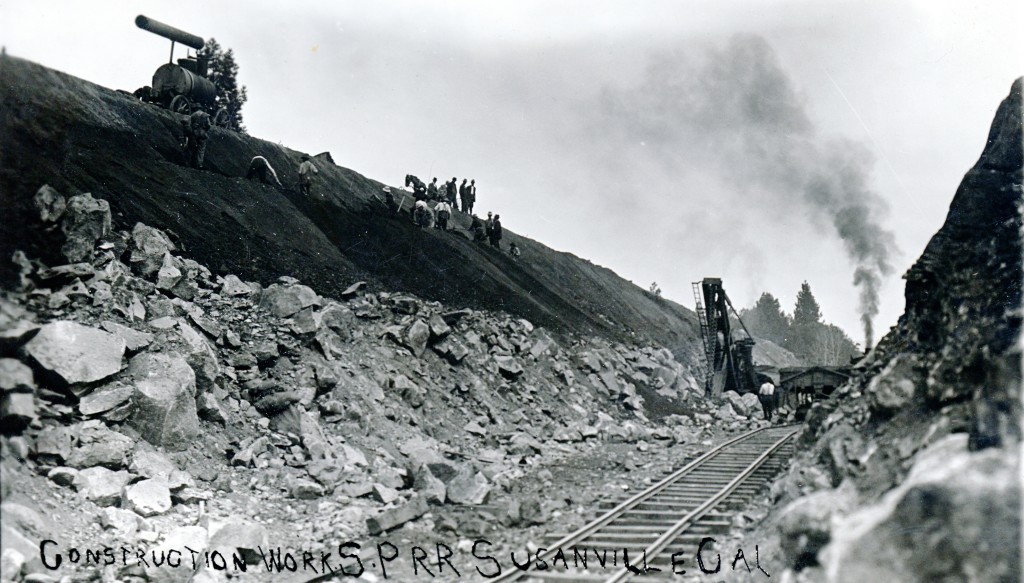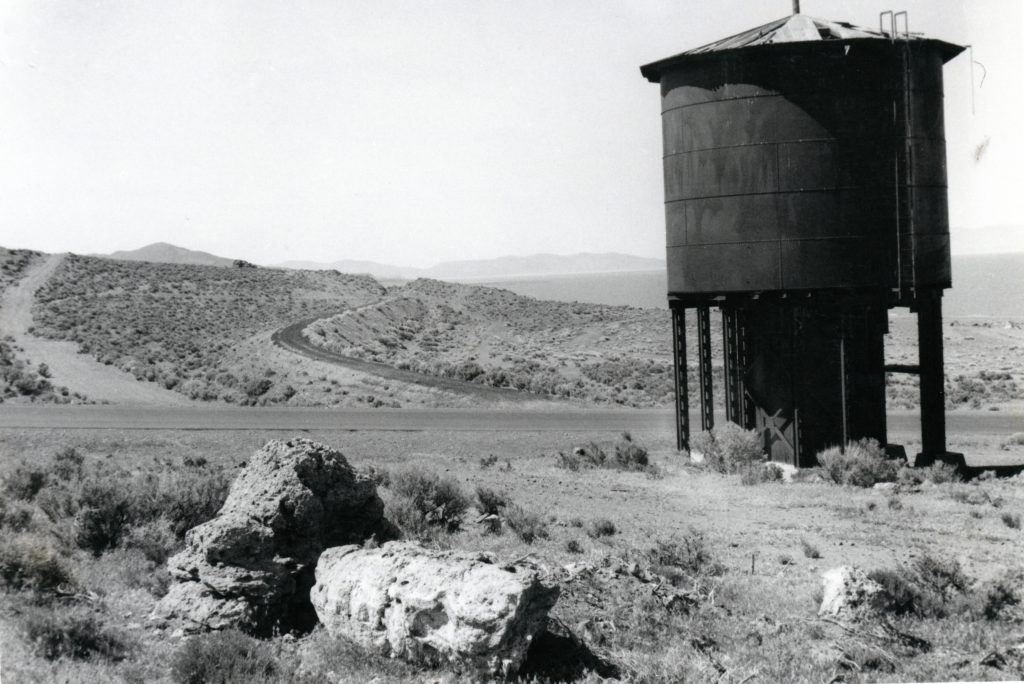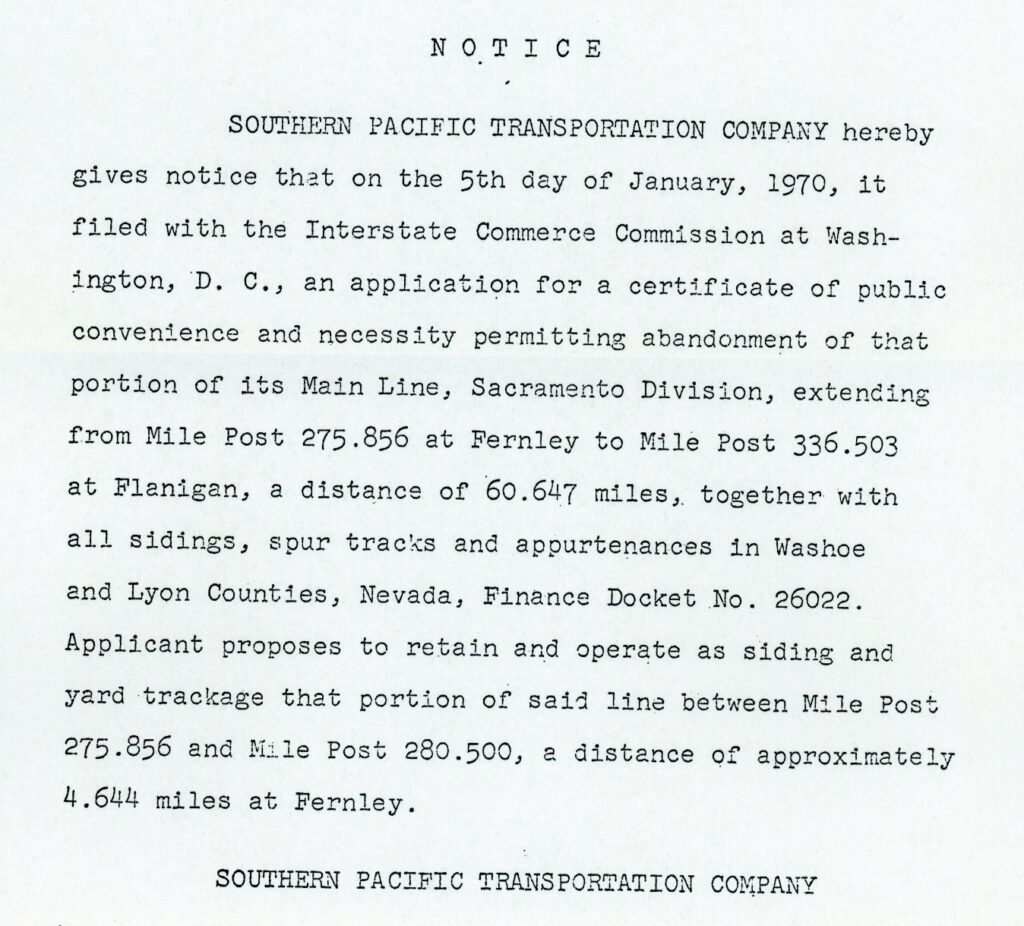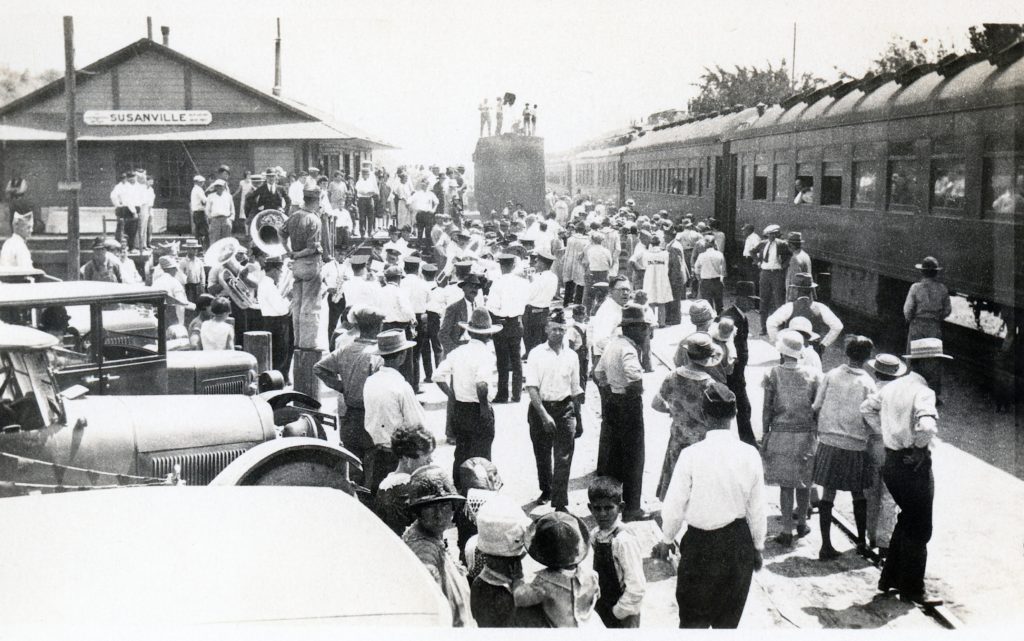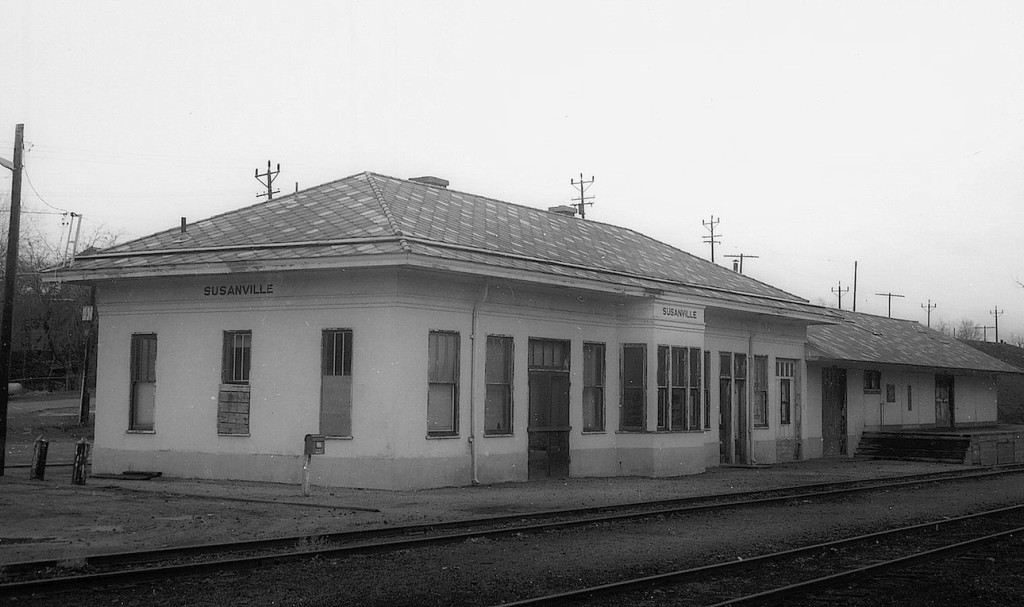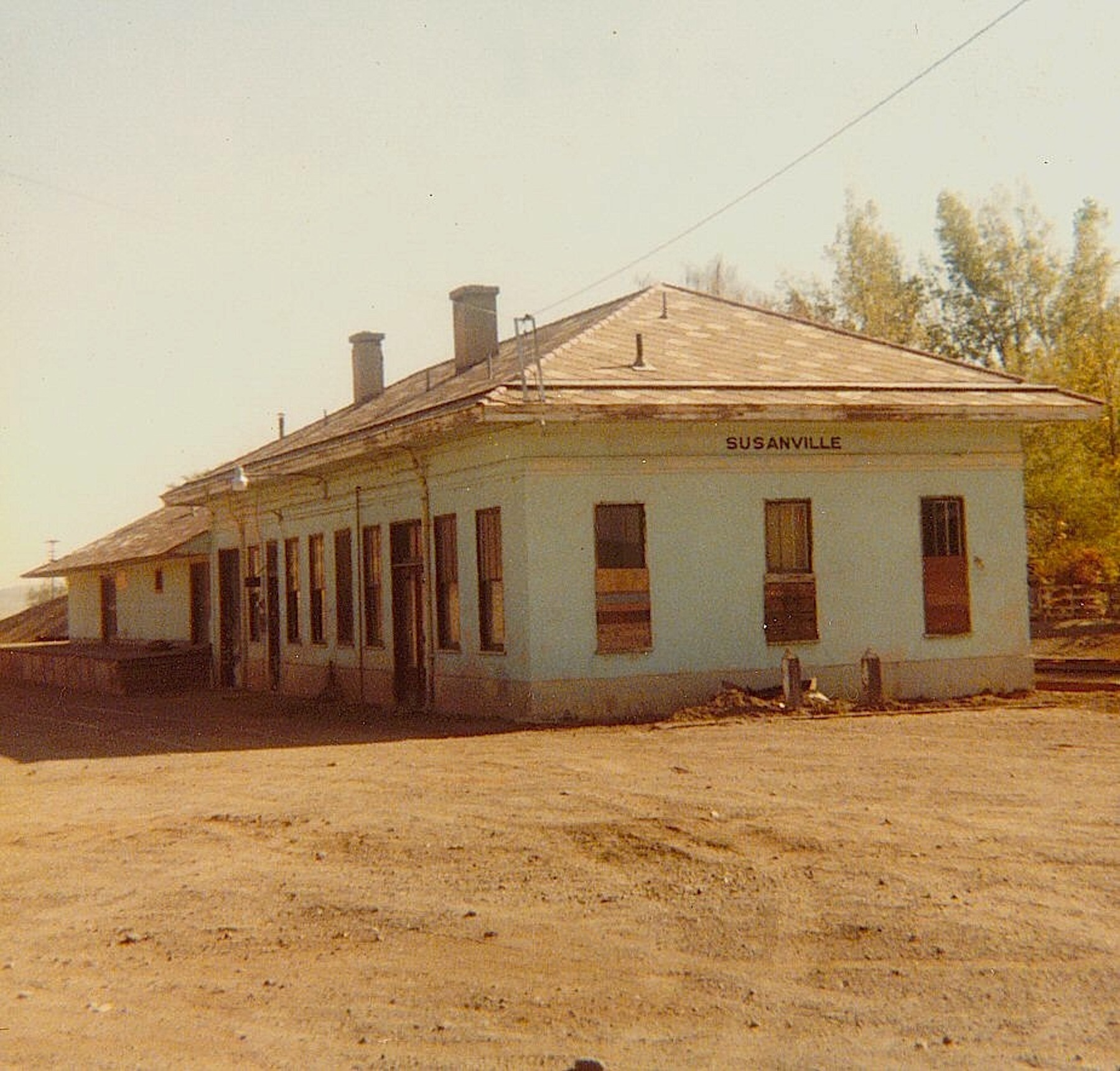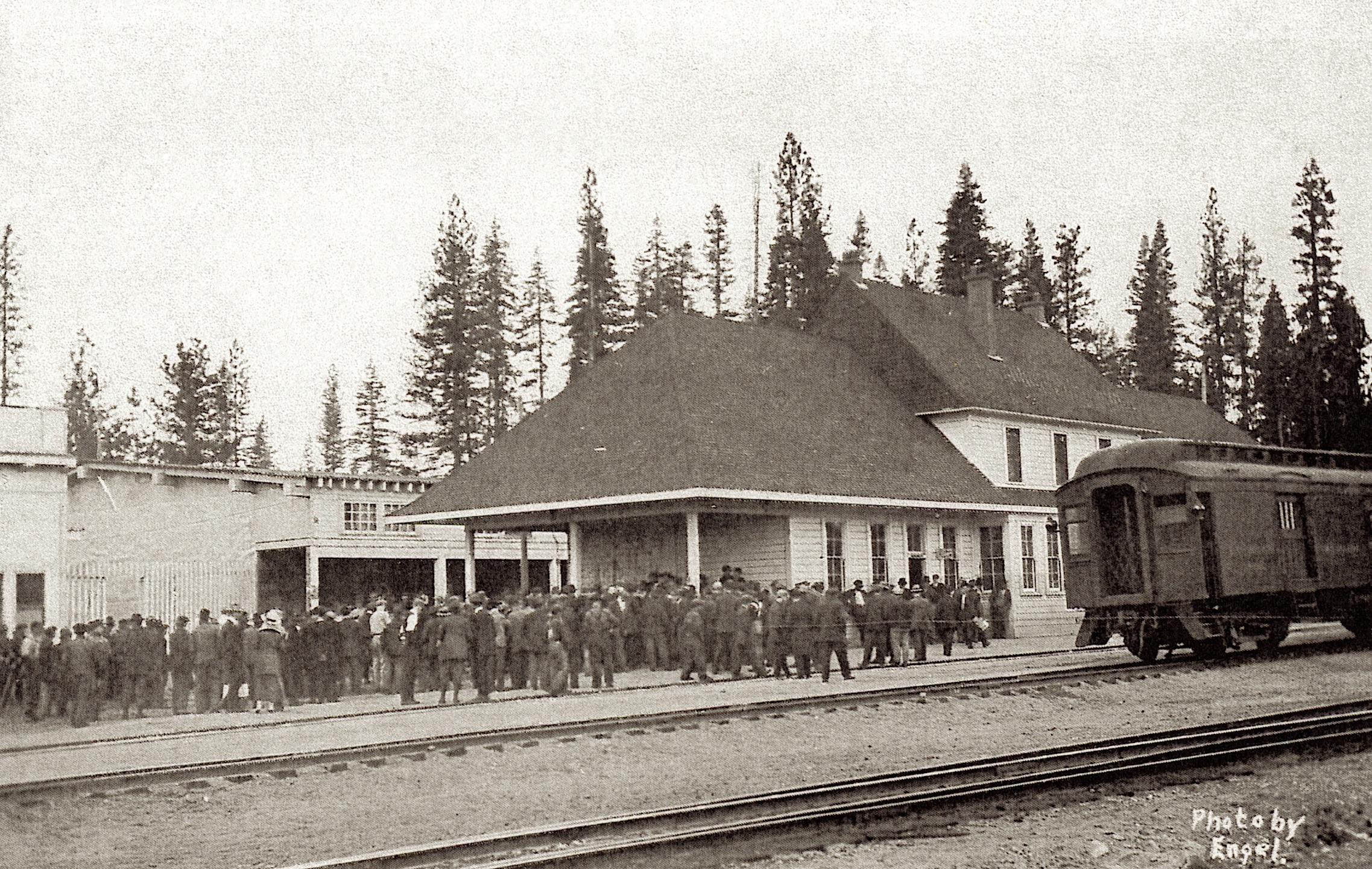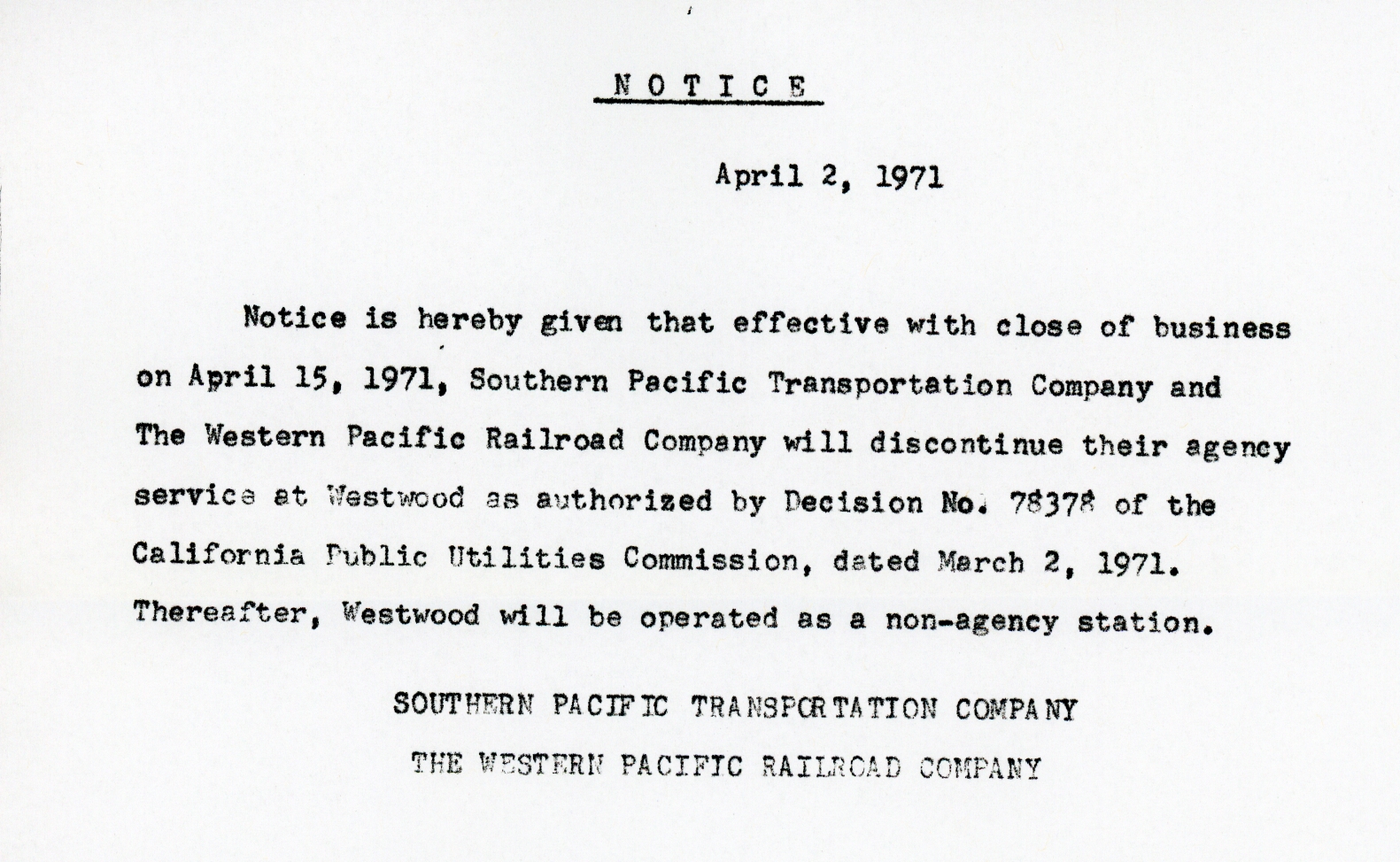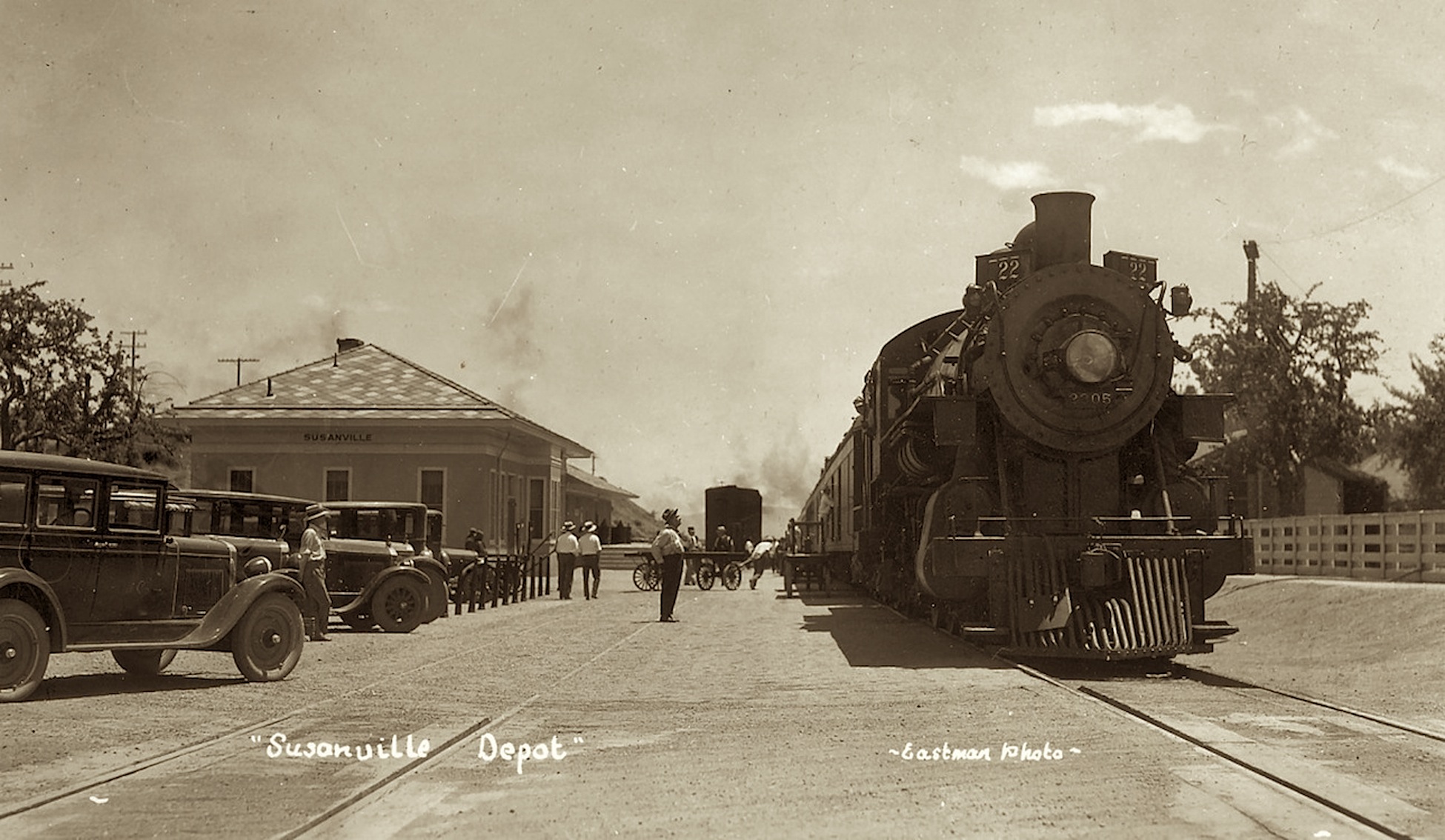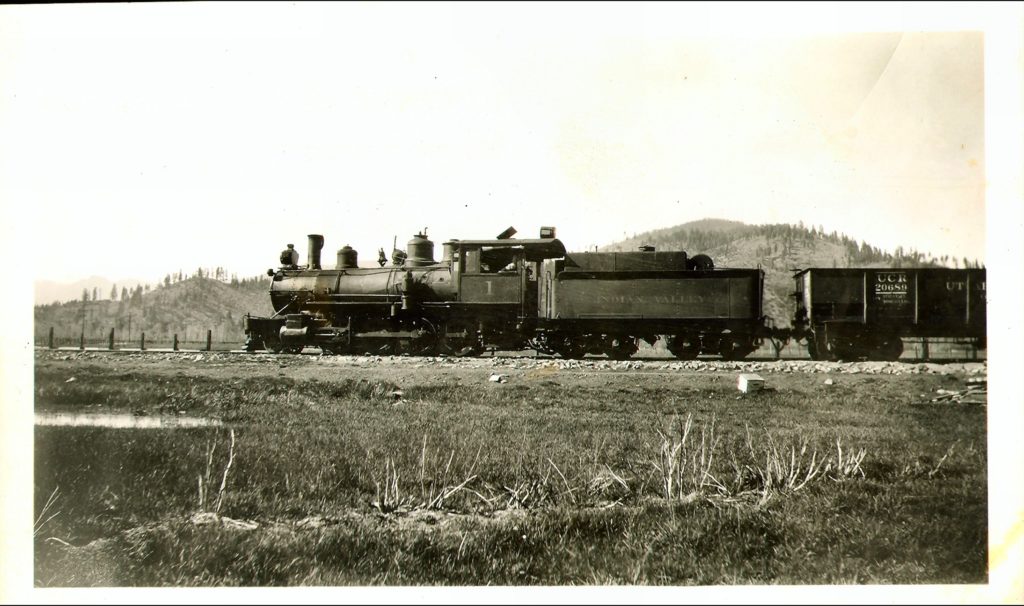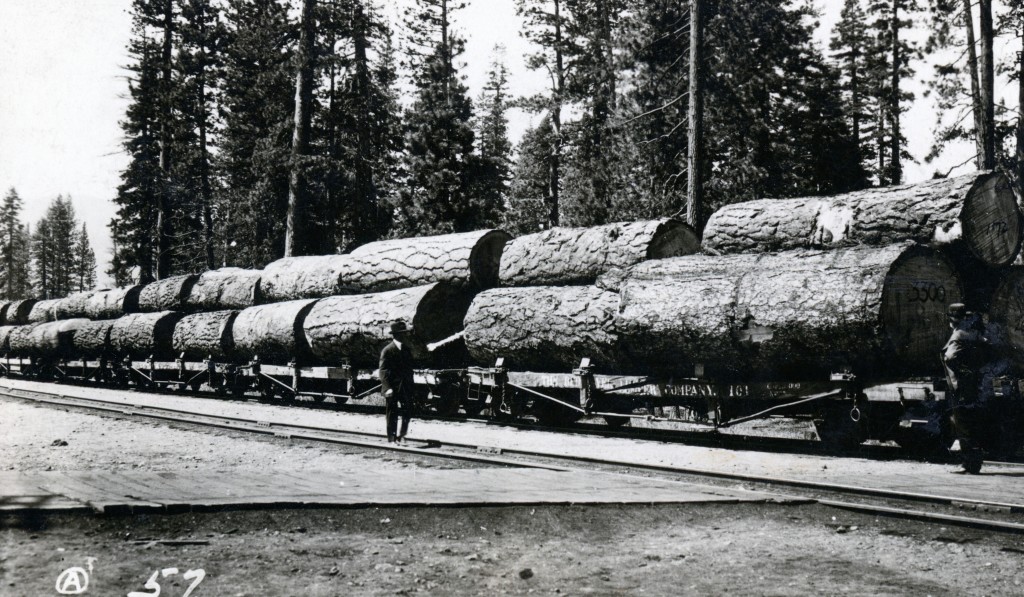
For lumber companies back in the day, taking photographic scenes to show case premium logs and/of forest scenes served an unusual purpose that the casual observer would not be aware of. The photographs were used in portfolios to show bondholders, investors and other stakeholders what they were getting for their money.
This particular photograph is very revealing. These are Fruit Growers logs on Red River flat cars. When both Fruit Growers and Red River established their mills, they made agreement with the Southern Pacific Railroad to provide them with rail cars to transport the logs to the mill, saving the companies an expense. Red River found out the hard way that Southern Pacific was not always reliable and eventually purchased their own cars to care of those situation. In this particular instance, Red River was being a good neighbor to Fruit Growers and came to their aid to lend them some cars.
Tim
